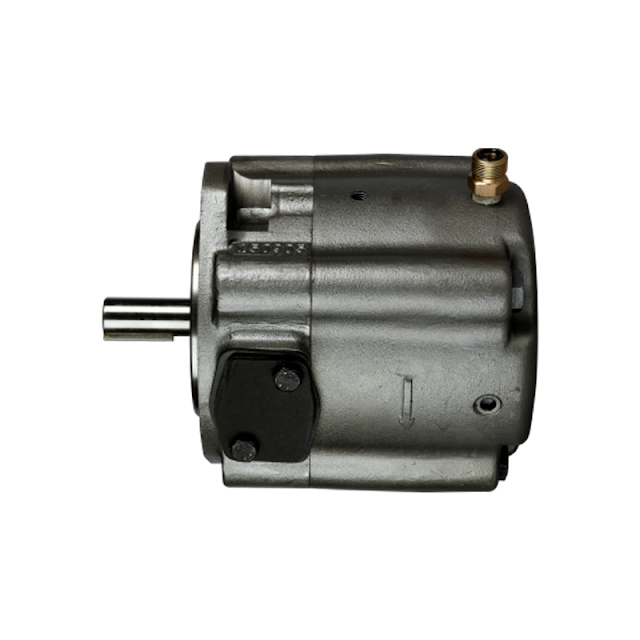Servo Motor Hydraulic Pumps: The Heart of Precision Hydraulic Systems
In the world of hydraulic systems, precision and efficiency are everything. Whether you’re operating heavy machinery, automating a production line, or managing complex industrial processes, the performance of your hydraulic system can make or break your operations. At the core of many advanced hydraulic systems lies a critical component: the servo motor hydraulic pump.
But what exactly is a servo motor hydraulic pump, and why is it so important? If you’ve ever struggled with inconsistent performance, high energy costs, or frequent maintenance issues, this blog is for you. We’ll break down how servo motor hydraulic pumps work, their benefits, and how they compare to other hydraulic components like internal and external gear pumps, load sensing proportional valves, and linear position sensors for hydraulic cylinders.
By the end of this post, you’ll have a clear understanding of why servo motor hydraulic pumps are a game-changer—and how they can solve some of the most common hydraulic system challenges.
What Is a Servo Motor Hydraulic Pump?
A servo motor hydraulic pump is a sophisticated device that combines the precision of a servo motor with the power of hydraulic technology. Unlike traditional hydraulic pumps, which operate at a constant speed, servo motor-driven pumps adjust their output dynamically based on the system’s needs. This means:
Energy Efficiency: They only use the energy required, reducing waste.
Precision Control: Perfect for applications requiring exact movements or pressure control.
Quieter Operation: Servo motors run more smoothly, cutting down on noise.
How Does It Compare to Other Hydraulic Components?
To truly appreciate the value of a servo motor hydraulic pump, it’s helpful to understand how it fits into the broader hydraulic ecosystem. Let’s compare it to a few other key components:
1. Internal and External Gear Pumps
Gear pumps are among the most common types of hydraulic pumps. They’re simple, reliable, and cost-effective. However, they lack the precision and efficiency of servo motor hydraulic pumps. While gear pumps are great for basic applications, they often fall short in systems requiring dynamic control or energy savings.
2. Load Sensing Proportional Valves
Load sensing proportional valves are designed to adjust pressure and flow based on the system’s demands. While they’re excellent for maintaining balance in hydraulic systems, they work best when paired with advanced pumps like servo motor hydraulic pumps. Together, they create a highly efficient and responsive system.
3. Linear Position Sensors for Hydraulic Cylinders
Linear position sensors are used to monitor the position of hydraulic cylinders, ensuring precise movement and control. When integrated with a servo motor hydraulic pump, these sensors can enhance the overall accuracy and reliability of the system.
Key Benefits of Servo Motor Hydraulic Pumps
Why are servo motor hydraulic pumps becoming the go-to choice for modern hydraulic systems? Here are some of their standout benefits:
Energy Savings: By adjusting output in real-time, these pumps significantly reduce energy consumption compared to traditional pumps.
Enhanced Precision: Ideal for applications requiring exact movements or pressure control.
Reduced Noise: Servo motors operate more quietly than traditional hydraulic systems.
Longer Lifespan: With fewer moving parts and less wear and tear, these pumps tend to last longer.
Customizable Performance: They can be tailored to meet the specific needs of your application.
Real-World Applications
Servo motor hydraulic pumps are used in a wide range of industries and applications, including:
Manufacturing: Powering robotic arms, CNC machines, and assembly lines.
Construction: Enabling precise control in excavators, cranes, and loaders.
Agriculture: Running tractors, harvesters, and irrigation systems.
Aerospace: Ensuring smooth operation in flight simulators and landing gear systems.
Common Challenges and Solutions
While servo motor hydraulic pumps offer numerous benefits, they’re not without their challenges. Here are a few common issues and how to address them:
High Initial Cost: While the upfront investment may be higher, the long-term energy savings and reduced downtime often justify the expense.
Complex Installation: Proper installation is critical for optimal performance. Work with experienced technicians to ensure everything is set up correctly.
Maintenance Requirements: Regular maintenance is essential to keep these pumps running smoothly. This includes checking for leaks, monitoring fluid levels, and replacing worn components.
Why Choose THM Huade for Your Hydraulic Needs?
At THM Huade, we specialize in providing high-quality hydraulic solutions, including servo motor hydraulic pumps, load sensing proportional valves, and linear position sensors. Our team is dedicated to helping you optimize your hydraulic systems for maximum efficiency and performance.
Whether you’re looking to upgrade your existing system or need expert advice on maintenance and repair, we’re here to help.
Final Thoughts
Servo motor hydraulic pumps are more than just a piece of equipment—they’re a smart investment in the future of your operations. By understanding how they work and their benefits, you can make informed decisions that boost productivity and save money.
If you’re ready to take your hydraulic systems to the next level, don’t hesitate to reach out to the experts. Your machinery—and your bottom line—will thank you.




Comments
Post a Comment